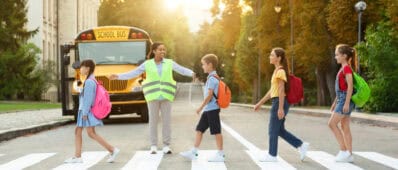Abstract
Connected Automated Vehicles (CAVs) are similar to other automated vehicles with the distinguishing difference being that CAVs obtain information about road conditionsdirectly from other vehicles and infrastructure (e.g., traffic signals, road sensors) rather than relying solely on onboard sensors. Different CAV technologies are currently being tested and evaluated to assess the prospects for future implementation. These tests involve moving CAV-equipped vehicles on a physical test track and recording how the vehicles operate under different traffic conditions (Figure 1). Since it is difficult and expensive to recreate multiple real-world driving conditions on a single test track, virtual environments are typically used to simulate different traffic conditions, such as traffic signal operation, actions by other vehicles on the road, and other scenarios. These virtual hardware-in-the-loop (HIL) tests can expedite CAV performance evaluation and inform future system implementation; however, existing HIL test systems often lack the ability to manage large amounts of test data, which limits the value and use of these tests.




